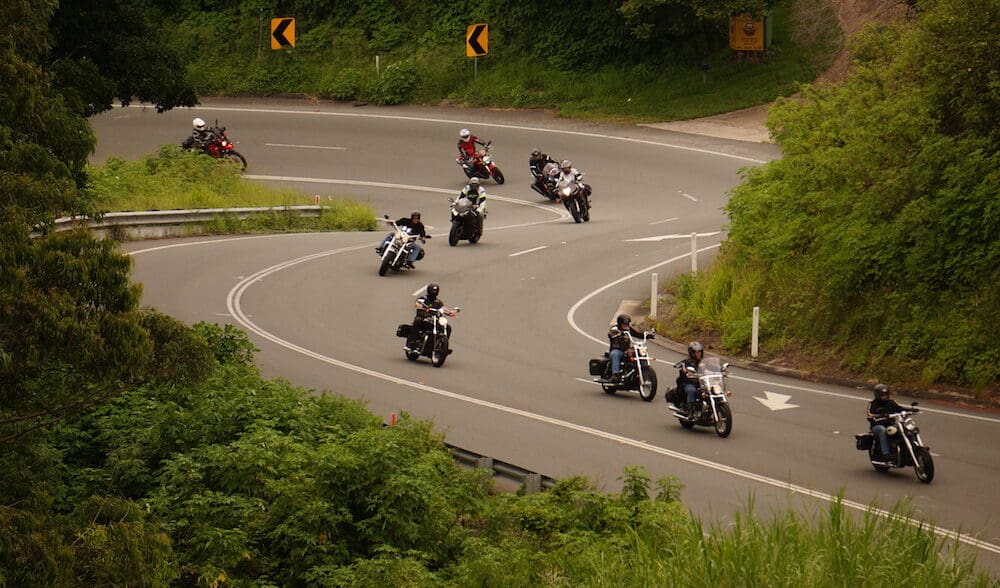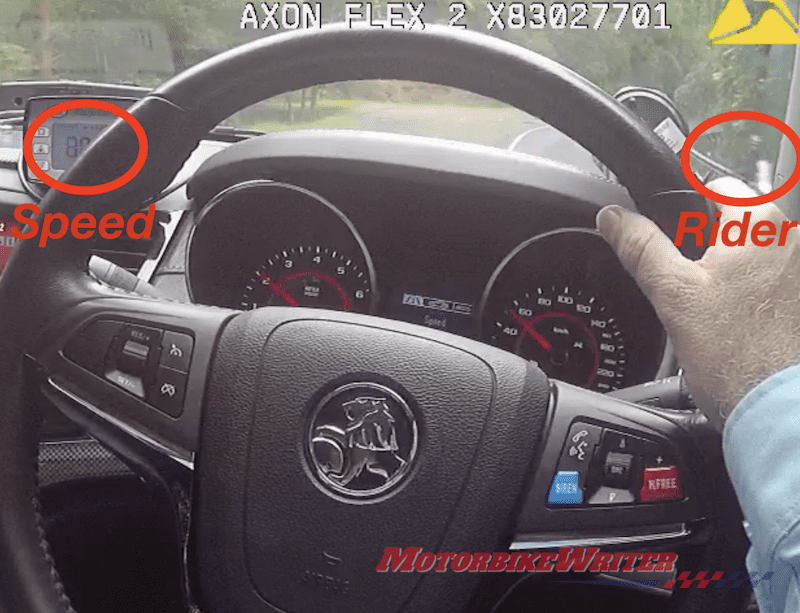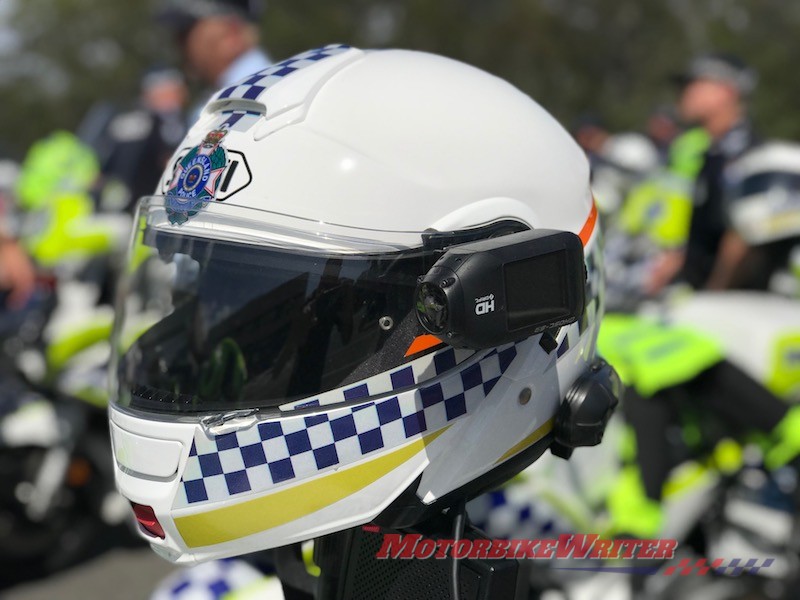Riders who believe there is safety in numbers may be in for a shock when the whole group is pulled over by police and fined for speeding.
The issue was brought to our attention when three of a group of four Brisbane riders were recently pulled over and fined for speeding.
One of the riders decided to challenge the fine because he believed he was not doing the same speed as the others.
His lawyer advised him “a group of motorcyclist travelling together can be reasonably considered as all travelling at the same speed, therefore the police only need to confirm one was speeding to be able to apply the same ticket to the rest of the group”.
The rider’s challenge was unsuccessful in Magistrates Court this week.
Queensland Police officer Senior Constable John Wilkins used an in-car radar to record the speed of three of the riders as they approached in the opposite direction to which he was travelling. He missed the fourth rider.
To back up his observations of each rider’s speed, he used a bodycam to record the vision of the riders and a partial view of their speed on the dashboard-mounted radar unit.
Proving the speeds of several riders in a group seems impossible, yet the Magistrate in this case accepted the police evidence.
The defendant, who has already spent $5500 on the matter, plans to take it further.
Click here for the bodycam video evidence and more details on this case.
No safety in numbers
Many riders may have similar stories of numbers of riders copping the same speeding fine from one speed detection.
That seems unjust since most mobile radar equipment cannot pick up multiple speed detections.
Others have examples of only one rider being pulled out of a group for speeding.
That’s just unfair!
Police have been known to cancel speeding tickets from older radar cameras if two or more vehicles are in, or close to, the radar beam, because they are not able to distinguish between multiple objects.
However, it should be noted that most fixed speed cameras and some new mobile laser devices such as Western Australia’s PoliScanspeed camera can reliably pick up multiple speed offences from a group of vehicles.
And in the Brisbane case noted above, the officer cunningly backs up his evidence with bodycam video which the court accepted.
Police replies
We asked police in each state about their operations and policy on multiple seeding offences off the one detection.
NSW police refused to comment on “hypothetical situations”.
Western Australian and Victorian police say the circumstances might allow an office to fine a group of officers from one detection.
“Under the right circumstances it is possible for police to intercept and issue speeding infringements to a large group of motorcyclists,” VicPol says.
However, they won’t say what those “right circumstances” are.
WA Police say if an officer detects speeding motorists on handheld or dash-mounted cameras “it comes down to the time, place, circumstance and the discretion of the officer”.
“That said, it is possible for an officer who detects a number of vehicles travelling together at the same speed to issue them all with an infringement,” WA Police say.
It seems police are willing to fine a group of riders and accept the chance that it may be challenged in court.
Here are the replies from Queensland, Western Australia and South Australia:
Queensland Police utilise multiple types of speed detection devices that are capable of accurately detecting motorists exceeding the speed limit. Police remind all road users to drive safely and not exceed the speed limit. A handheld laser speed detection device will enable accurate targeting of an individual vehicle travelling in a group of vehicles. A mobile radar will not allow the individual targeting of a vehicle travelling in a group of vehicles, however it does have a feature that will allow the device to display both the strongest signal returned and the fastest vehicle detected. With regards to both types of devices, it is incumbent upon the operator to make visual observations as part of a valid tracking history to confirm the speed detected is accurate. The observations of the officer are vital in supporting any prosecution.
SAPOL uses both hand-held laser and vehicle mounted radar devices to detect speeds, along with officers observations of vehicles. A laser device could be used to detect speed of a motor cycle rider in a group. The detection could be used to prove that other persons in the group were exceeding the speed limit, if they were observed by police as travelling parallel to each other.”





